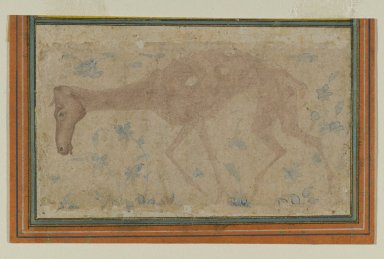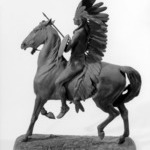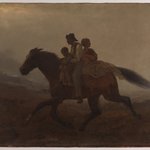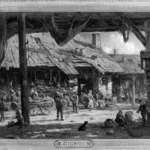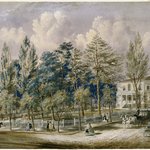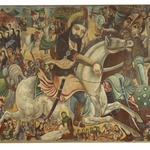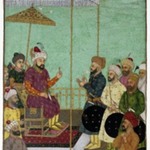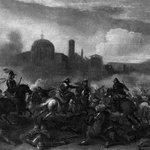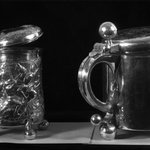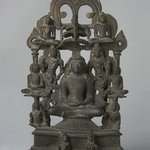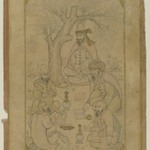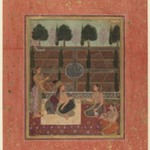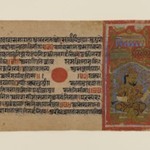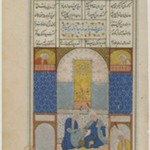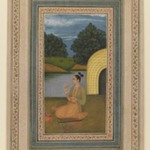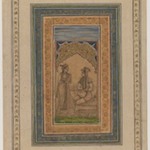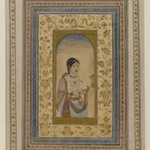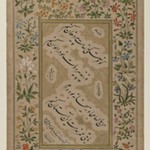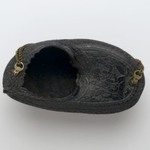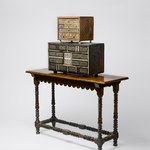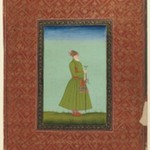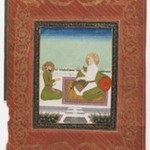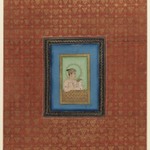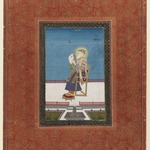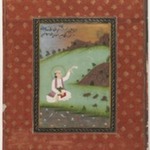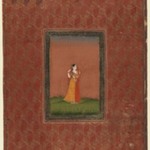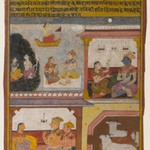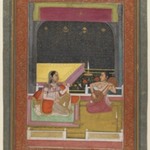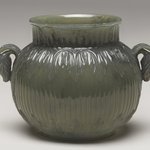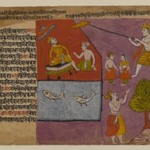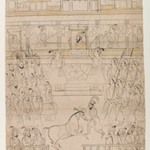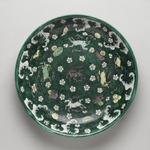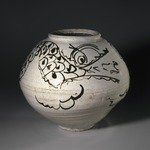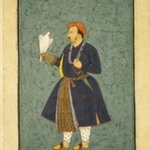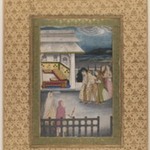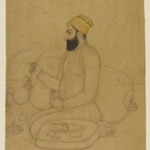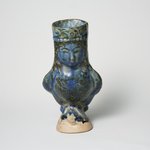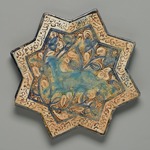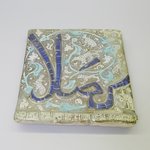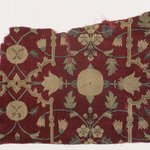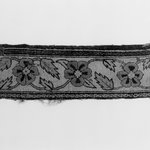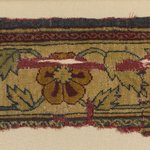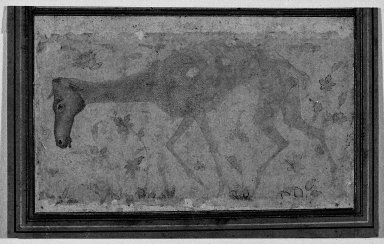
An Emaciated Horse
Asian Art
In Sufi poetry, the ego is often represented by the metaphor of a horse (as seen here) that is starved and humiliated, suggesting the training necessary to transport its rider (the soul) to the desired destination. This theme, which was meant to remind viewers that the physical world is transient while the soul is eternal, was a popular subject in sixteenth-century Iran and seems to have spread to India in the seventeenth century. It may have been inspired by similar depictions in China, where the image of the horse was often used to represent humans and their behavior. Such images probably reached the Islamic world after the Mongol invasions of the thirteenth century.
CULTURE
Indian
MEDIUM
Ink and light color wash on paper
GEOGRAPHICAL LOCATIONS
- Possible place made: Deccan, India
- Possible place made: Northern region, India
DATES
mid 17th century
DIMENSIONS
sheet: 2 13/16 x 4 9/16 in. (7.1 x 11.6 cm)
image: 2 7/8 x 3 15/16 in. (7.3 x 10.0 cm) (show scale)



COLLECTIONS
Asian Art
ACCESSION NUMBER
40.372
CREDIT LINE
Gift of Mrs. George Dupont Pratt
EXHIBITIONS
MUSEUM LOCATION
This item is not on view
CAPTION
Indian. An Emaciated Horse, mid 17th century. Ink and light color wash on paper, sheet: 2 13/16 x 4 9/16 in. (7.1 x 11.6 cm). Brooklyn Museum, Gift of Mrs. George Dupont Pratt, 40.372 (Photo: Brooklyn Museum, 40.372_acetate_bw.jpg)
IMAGE
overall, 40.372_acetate_bw.jpg. Brooklyn Museum photograph
"CUR" at the beginning of an image file name means that the image was created by a curatorial staff member. These study images may be digital point-and-shoot photographs, when we don\'t yet have high-quality studio photography, or they may be scans of older negatives, slides, or photographic prints, providing historical documentation of the object.
RIGHTS STATEMENT
No known copyright restrictions
This work may be in the public domain in the United States. Works created by United States and non-United States nationals published prior to 1923 are in the public domain, subject to the terms of any applicable treaty or agreement.
You may download and use Brooklyn Museum images of this work. Please include caption information from this page and credit the Brooklyn Museum. If you need a high resolution file, please fill out our online application form (charges apply).
The Museum does not warrant that the use of this work will not infringe on the rights of third parties, such as artists or artists' heirs holding the rights to the work. It is your responsibility to determine and satisfy copyright or other use restrictions before copying, transmitting, or making other use of protected items beyond that allowed by "fair use," as such term is understood under the United States Copyright Act.
The Brooklyn Museum makes no representations or warranties with respect to the application or terms of any international agreement governing copyright protection in the United States for works created by foreign nationals.
For further information about copyright, we recommend resources at the United States Library of Congress, Cornell University, Copyright and Cultural Institutions: Guidelines for U.S. Libraries, Archives, and Museums, and Copyright Watch.
For more information about the Museum's rights project, including how rights types are assigned, please see our blog posts on copyright.
If you have any information regarding this work and rights to it, please contact copyright@brooklynmuseum.org.
RECORD COMPLETENESS
Not every record you will find here is complete. More information is available for some works than for others, and some entries have been updated more recently. Records are frequently reviewed and revised, and we welcome any additional information you might have.
